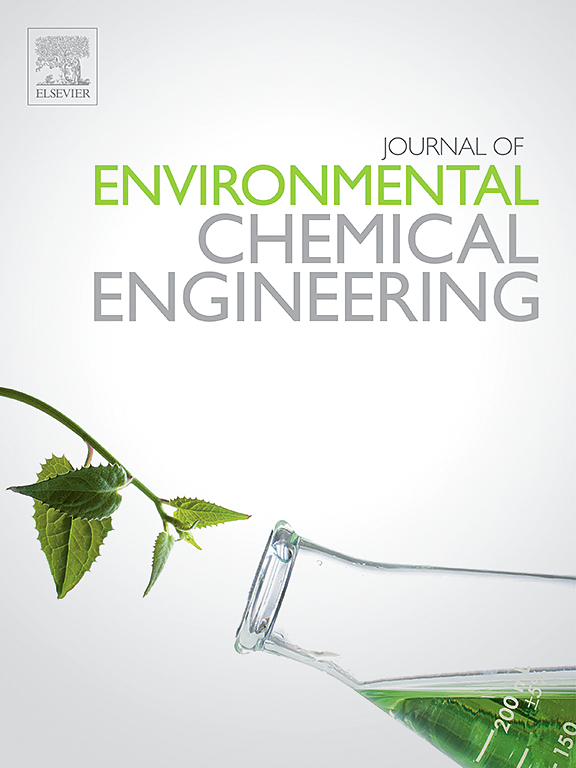MXene 终止基团对各种合成策略的依赖性及其在 MXene 界面的热电子动力学
IF 7.4
2区 工程技术
Q1 ENGINEERING, CHEMICAL
引用次数: 0
摘要
MXenes 是一种具有显著特性的二维(2D)材料,备受关注。这些材料在合成时通常会进行表面官能化,如 -O、-OH 和 -F,从而调节其特性。实验合成通常会产生混合终止,而计算研究则预测会产生纯终止。本研究全面概述了 MXenes 中化学终止的特点和潜在应用。终止基团的类型取决于制造介质:水性介质会产生 -OH 和 -O 终止基团,碱性介质会产生 -F、-Cl、-Br 和 -I,氟化氢铵蚀刻会产生 -NH4+ 和 NH3,而直接合成方法会根据需要产生各种终止基团。我们还探索了光诱导的非热化受热电子在质子驱动化学过程中的作用。理解这些发生在热化(∼125 fs)之前的电子动力学仍然具有挑战性。飞秒时间分辨光谱法用于研究 MXene/分子复合物中的这些动态。这种技术可以区分热化和非热化电子反应。有两种非热化途径:(i) 非加热电子在不到 50 fs 的时间内快速传输到附着的分子;(ii) 非热化电子散射在 125 fs 的时间内加热吸附的分子。这些路径取决于照射波长以及分子和 MXene 之间的能量差。热力学上稳定的 MXene 成分的计算预测对于指导实验目标至关重要。这项研究还对具有 11 个表面终止基团的热力学稳定 MXene 进行了全面的计算研究。结果分析研究了评估 MXene 热力学稳定性的关键因素,揭示了 MXene 表面终止基团的化学性质对热电子动力学和热力学稳定性至关重要。本综述还深入探讨了 MXene 的终止过程、合成介质和合成策略,强调了插层过程的重要性。它还阐明了热电子理论、界面传热和光催化的机制和机遇。本文章由计算机程序翻译,如有差异,请以英文原文为准。
Reliance of MXene terminating groups on various synthetic strategies and its hot electron dynamics at MXene interfaces
MXenes are two-dimensional (2D) materials with notable properties, attracting significant attention. These materials are often synthesized with surface functionalization like -O, -OH, and -F, which regulate their properties. While experimental synthesis typically results in mixed terminations, computational studies predict pure terminations. This study provides a comprehensive overview of the characteristics and potential applications of chemical termination in MXenes. The type of terminating groups depends on the fabrication media: aqueous media yields -OH and -O terminations, alkaline media yields -F, -Cl, -Br, and -I, ammonium bifluoride etching yields -NH4+ and NH3, and direct synthesis methods yield various terminations on demand. We also explore the role of photo-induced non-thermalized heated electrons at interfaces in plasmonic-driven chemical processes. Understanding these electron dynamics, which occur before thermalization (∼125 fs), remains challenging. Femtosecond time-resolved spectroscopy was used to study these dynamics in MXene/molecule complexes. This technique allows distinguishing between thermalized and non-thermalized electron responses. There are two non-thermalization channels: (i) rapid transport of non-heated electrons to attached molecules in less than 50 fs, and (ii) heating of adsorbed molecules due to non-thermalized electron scattering within 125 fs. These paths depend on the irradiating wavelength and the energy differential between molecules and MXene. Computational predictions of thermodynamically stable MXene compositions are essential for directing experimental goals. This work also presents a thorough computational investigation for thermodynamically stable MXenes with 11 surface terminating groups. The analysis of results investigates factors essential for assessing the thermodynamic stability of MXenes, revealing that the chemistry of MXene surface terminations is significantly crucial to hot electron dynamics and thermodynamic stability. This review also offers insights into the MXene termination process, synthesis media, and synthetic strategies, highlighting the importance of intercalation process. It also elucidates mechanisms and opportunities in hot electron theory, interfacial heat transfer, and photocatalysis.
求助全文
通过发布文献求助,成功后即可免费获取论文全文。
去求助
来源期刊

Journal of Environmental Chemical Engineering
Environmental Science-Pollution
CiteScore
11.40
自引率
6.50%
发文量
2017
审稿时长
27 days
期刊介绍:
The Journal of Environmental Chemical Engineering (JECE) serves as a platform for the dissemination of original and innovative research focusing on the advancement of environmentally-friendly, sustainable technologies. JECE emphasizes the transition towards a carbon-neutral circular economy and a self-sufficient bio-based economy. Topics covered include soil, water, wastewater, and air decontamination; pollution monitoring, prevention, and control; advanced analytics, sensors, impact and risk assessment methodologies in environmental chemical engineering; resource recovery (water, nutrients, materials, energy); industrial ecology; valorization of waste streams; waste management (including e-waste); climate-water-energy-food nexus; novel materials for environmental, chemical, and energy applications; sustainability and environmental safety; water digitalization, water data science, and machine learning; process integration and intensification; recent developments in green chemistry for synthesis, catalysis, and energy; and original research on contaminants of emerging concern, persistent chemicals, and priority substances, including microplastics, nanoplastics, nanomaterials, micropollutants, antimicrobial resistance genes, and emerging pathogens (viruses, bacteria, parasites) of environmental significance.
 求助内容:
求助内容: 应助结果提醒方式:
应助结果提醒方式:


